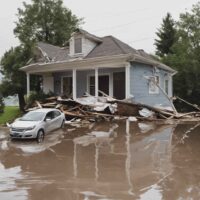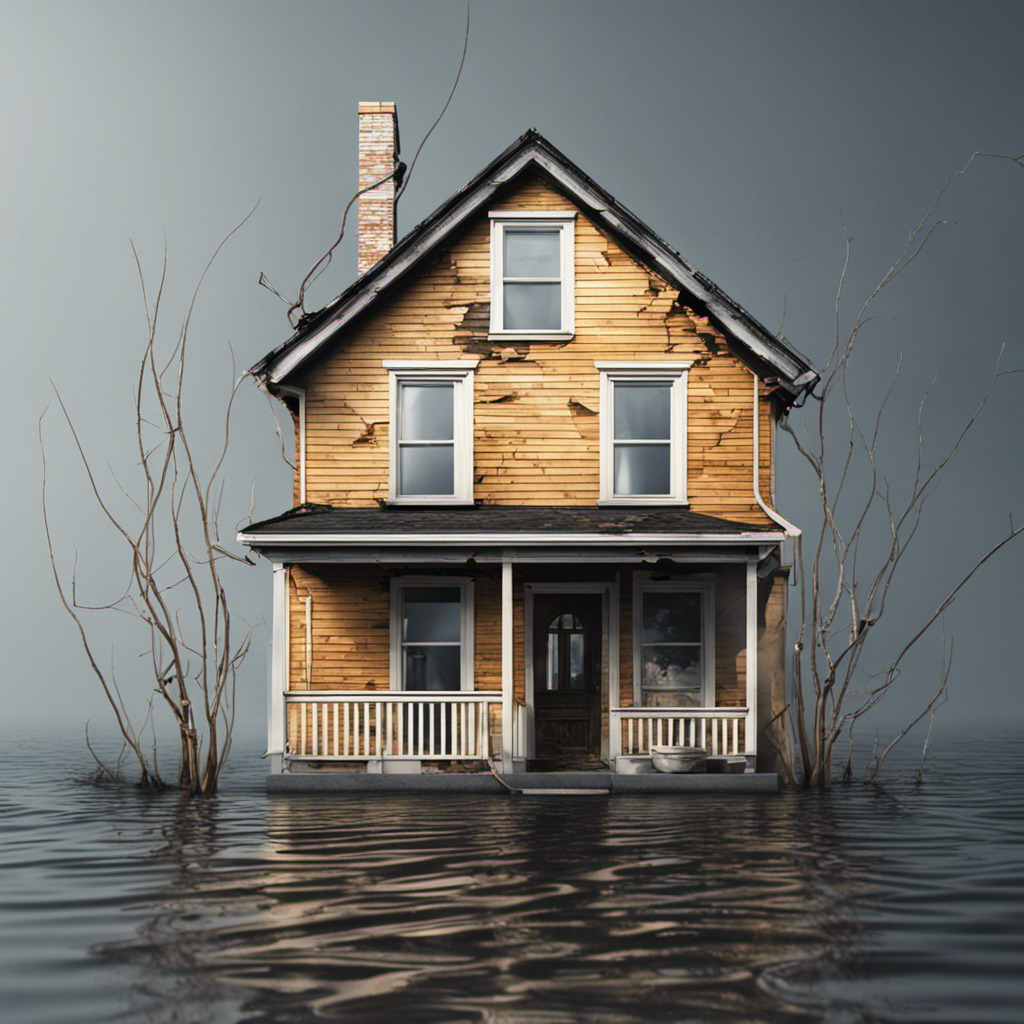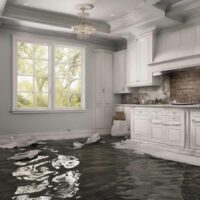
Siding is the silent verse of home exterior poetry; it paints a beautiful and protective canvas; but when water damage tarnishes this exterior poetry, a healing symphony comes to life. This comprehensive guide aims to be your reliable travel companion while you repair water-damaged siding.
For homeowners who are eager to restore the integrity and charm of their home’s exterior, each part provides crucial information, ranging from understanding the anatomy of siding materials to revealing practical repair strategies.
Picture a façade revitalized, with painstaking restoration work resonating through every repaired panel. Let us guide you through the complex world of siding restoration together, arming you with the knowledge to bring back the beauty of your house’s exterior.
See also our post on Hard Water Stain Removal in Commercial Restrooms
How to Note Water Damage in Siding
Stains and Discoloration
Identify stains or discoloration on the siding surface. Water damage often manifests as dark spots or streaks, signaling the infiltration of moisture into the siding material.
Swelling or Warping
Observe any swelling or warping of the siding panels. Water absorption causes the material to expand, leading to visible distortions in the structure of the siding.
Mold and Mildew Growth
Be vigilant for signs of mold or mildew growth. Prolonged exposure to moisture creates a conducive environment for these fungi, indicating potential water damage.
Peeling Paint or Finish
Check for peeling paint or finish on the siding. Water damage can compromise the adhesion of coatings, resulting in the detachment of paint or protective layers.
Softened or Rotted Areas
Gently press on the siding to detect soft or rotted areas. Softness indicates deterioration of the material due to water exposure, requiring targeted repair.
Immediate Measures for Mitigation
Identify and Stop the Source
Locate and address the source of water entry. Whether it’s a leaky roof, malfunctioning gutter, or damaged flashing, stopping the water source is crucial to prevent further damage.
Remove Standing Water
Promptly remove any standing water on or around the siding. Standing water exacerbates water damage and accelerates the deterioration of siding materials.
Improve Ventilation
Enhance ventilation in the affected areas. Proper airflow aids in drying the siding and prevents the accumulation of moisture, reducing the risk of further damage.
Inspect and Repair Gutters
Thoroughly inspect and repair gutters. Ensure they are clear of debris and properly channel water away from the house to prevent future siding damage.
Use Dehumidifiers
Deploy dehumidifiers indoors to reduce overall humidity levels. Lower humidity supports the drying process and inhibits the growth of mold on water-damaged siding.
Materials and Types of Siding
Vinyl Siding
Understand the characteristics of vinyl siding. Vinyl is resilient but can crack or warp under extreme conditions, and repairing involves replacing damaged sections.
Wood Siding
Comprehend the nature of wood siding. While visually appealing, wood is susceptible to rot and decay, necessitating careful inspection and targeted repairs.
Fiber Cement Siding
Familiarize yourself with fiber cement siding. Resistant to water damage but not impervious, fiber cement may require patching or replacement in affected areas.
Metal Siding
Recognize the properties of metal siding. Generally resistant to water damage, metal siding may still corrode, requiring rust removal and surface treatment.
Stucco Siding
Learn about stucco siding characteristics. Prone to cracks and water penetration, stucco repairs involve patching and resealing to maintain integrity.
Repair Techniques for Different Siding Materials
Vinyl Siding Repair
For vinyl siding, carefully remove damaged panels and replace them with new ones. Securely attach replacement panels, ensuring a seamless integration with the existing siding.
Wood Siding Repair
Repair wood siding by removing rotted sections and replacing them with matching wood. Sand, prime, and paint the repaired area to restore both aesthetics and protection.
Fiber Cement Siding Repair
Address fiber cement siding damage by cutting out affected sections and installing new panels. Seal joints and edges to prevent water infiltration.
Metal Siding Repair
Repair corroded metal siding by removing rust using a wire brush or sandpaper. Apply a rust-resistant primer and a matching coat of paint for a rejuvenated appearance.
Stucco Siding Repair
Patch cracks in stucco siding using a high-quality exterior patching compound. Ensure a thorough application, and finish by resealing the entire stucco surface for uniform protection.
See also our post on 15 Important Water Damage Restoration Tips
Preventive Maintenance for Long-Term Resilience
Regular Cleaning
Incorporate regular cleaning into your siding maintenance routine. Remove dirt, debris, and mold to prevent water retention and potential damage.
Inspect Seals and Joints
Periodically inspect seals and joints. Ensure that caulk, sealants, and flashing around windows, doors, and corners are intact to prevent water intrusion.
Address Roof Issues
Address roofing issues promptly. A well-maintained roof prevents water from cascading onto siding, minimizing the risk of water damage.
Landscape Management
Manage landscaping around the house. Trim trees and bushes to prevent branches from hitting siding during storms, reducing the likelihood of physical damage.
Professional Inspection
Engage professionals for periodic siding inspections. Experts can identify potential issues early, providing recommendations for maintenance and preventing extensive damage.
Full Replacement Considerations
Extensive Damage Assessment
Assess the extent of water damage. If a large portion of the siding is compromised, full replacement may be more cost-effective and offer long-term benefits.
Matching Materials
Ensure replacement siding matches existing materials. Consistency in color, texture, and style maintains the aesthetic integrity of the home’s exterior.
Professional Installation
Opt for professional installation of replacement siding. Proper installation is crucial for optimal performance and longevity, minimizing the risk of future water damage.
Insulation Upgrade
Consider upgrading insulation during replacement. Improved insulation not only enhances energy efficiency but also adds an extra layer of protection against temperature-related siding damage.
Sealing and Weatherproofing
Prioritize proper sealing and weatherproofing during replacement. Adequate sealing prevents water infiltration, preserving the new siding and shielding it from future damage.
Legal and Insurance Considerations
Insurance Coverage Review
Review your insurance coverage for siding damage. Understand the extent of coverage for water-related issues and ensure your policy adequately protects against potential repair costs.
Documenting Damage for Claims
Thoroughly document water damage for insurance claims. Provide clear photographs, detailed descriptions, and professional assessments to support your claim.
Compliance with Local Regulations
Ensure compliance with local regulations. Understand any building codes or guidelines governing siding repair or replacement to avoid legal complications.
Professional Consultation for Claims
Seek professional consultation for insurance claims. Professionals experienced in siding repair can provide accurate assessments and documentation to support your case.
Legal Protections for Homeowners
Understand legal protections for homeowners. Familiarize yourself with consumer rights and protections in your locality to navigate potential disputes with contractors or insurers.
See also our post on Water Damage Restoration Guide: How to Restore Property After a Disaster
Conclusion
In the restoration narrative of water-damaged siding, every repair is a brushstroke on the canvas of your home’s durability and appeal. This all-inclusive guide has attempted to shed light on the repair process by providing an understanding of the complex world of siding restoration. As you set out to revitalize your home’s exterior, may the revitalized siding speak to the love and attention that have gone into maintaining the protective and beautiful skin of your treasured residence.






